Using dried beans instead of canned beans is an easy way to save money since dried beans cost about half the price per serving as canned beans. Cooking dried beans takes several hours but only requires checking on them a couple of times. For use in our meal plans, cook a bag (or two if your pot is large enough) of dried beans and freeze the beans in their own juice in 2 cup portions. Each bag of frozen beans can be used in place of 1 can of beans.
Pinto beans cooked with chopped onion (1-½ onions per pound of beans) are delicious served over cornbread with chopped onion and shredded cheddar cheese on top. Season the beans to taste with salt and pepper after cooking is complete.
Recipe
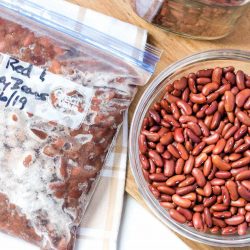
How To Cook Dried Beans for the Freezer
Ingredients
- 1 lb. bag dried beans, black, pinto, kidney, etc.
- water
Instructions
- Rinse beans in a colander and check to be sure there are no stones or other debris. Place beans in a large pot and cover with water so that the water is twice as deep as the beans. Soak for at least 5 hours.
- Drain beans in a colander and rinse pot. Return beans to pot and cook at a simmer until beans are tender, which can be anywhere from 45 minutes to 2 hours depending on the type of bean. Beans can also be cooked in the Instant Pot according to the times listed on their website. If cooking in the IP, be sure to watch the levels of food and water since beans foam while cooking. The inner pot should never be more than ½ full.
- Drain beans, reserving liquid (place colander on a lg. pan or bowl then pour beans into the colander so that the bowl catches the liquid). Separate beans into 2 cup servings in freezer bags. Cover beans in each bag with some of reserved liquid and freeze flat.
Nutrition per serving
Pin this recipe:
Recipes that use dried beans:
Here are a few of our recipes that freeze well. Give one of these a try or see all of our dried bean recipes.

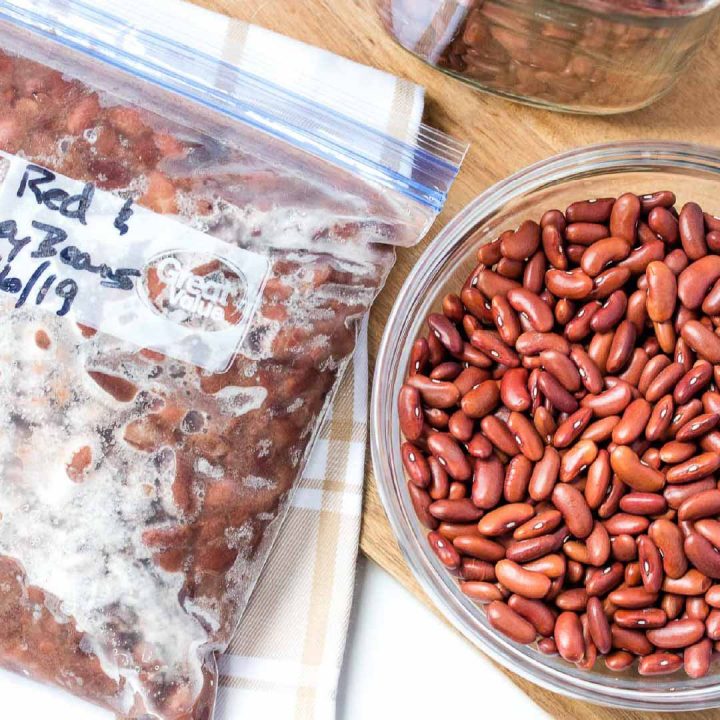
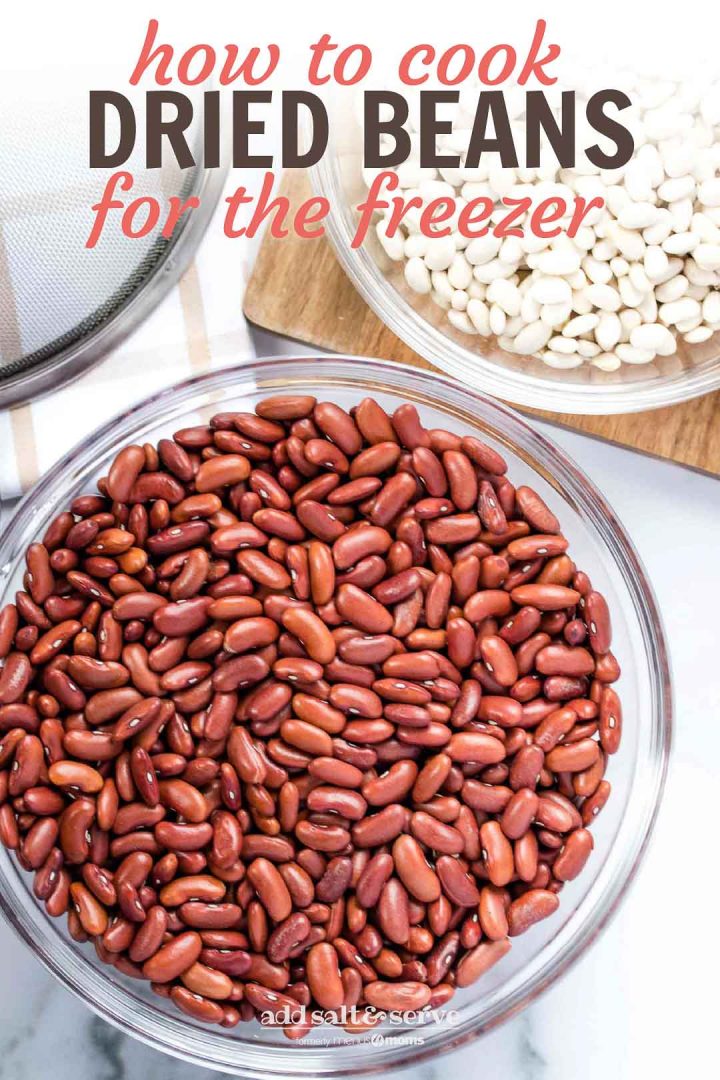
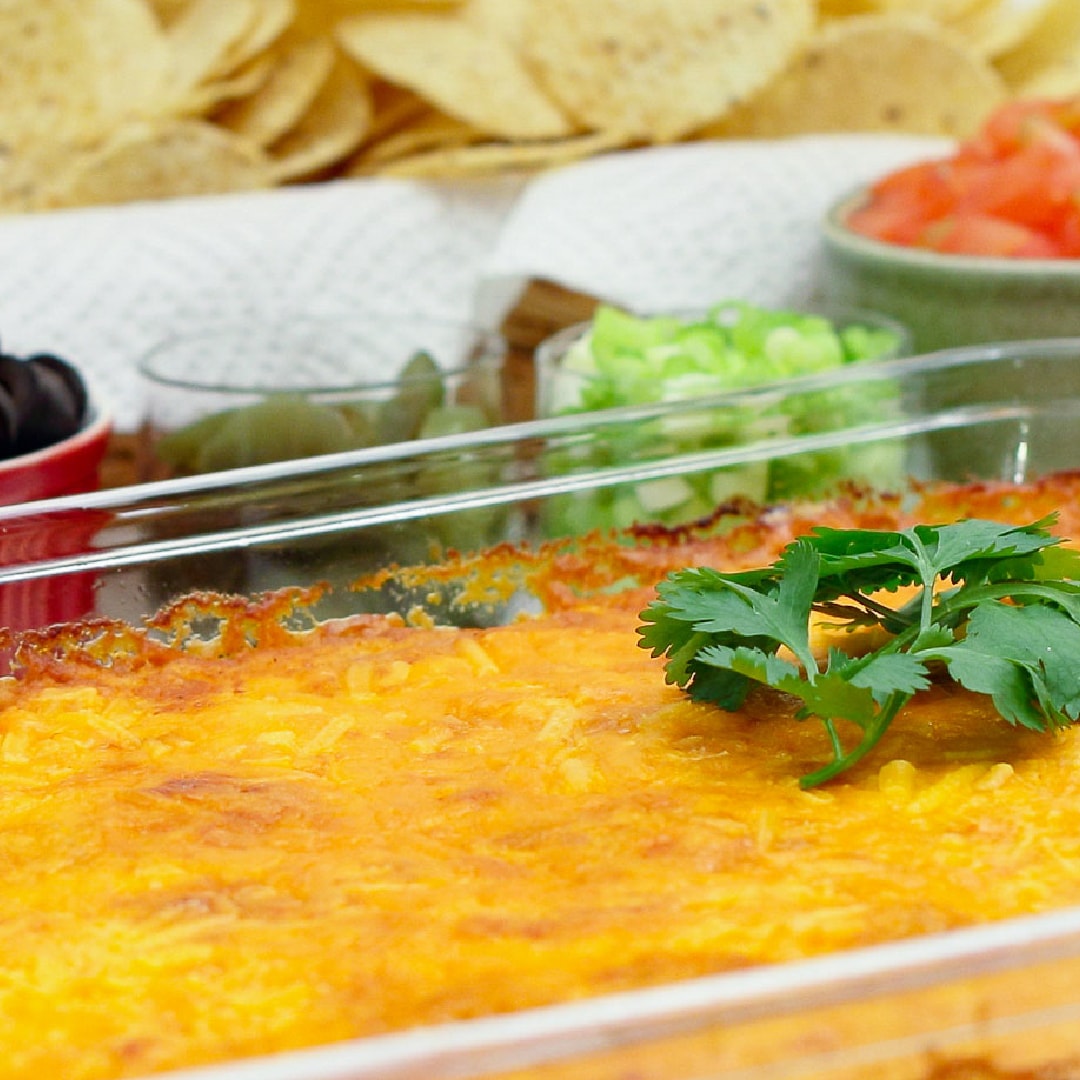
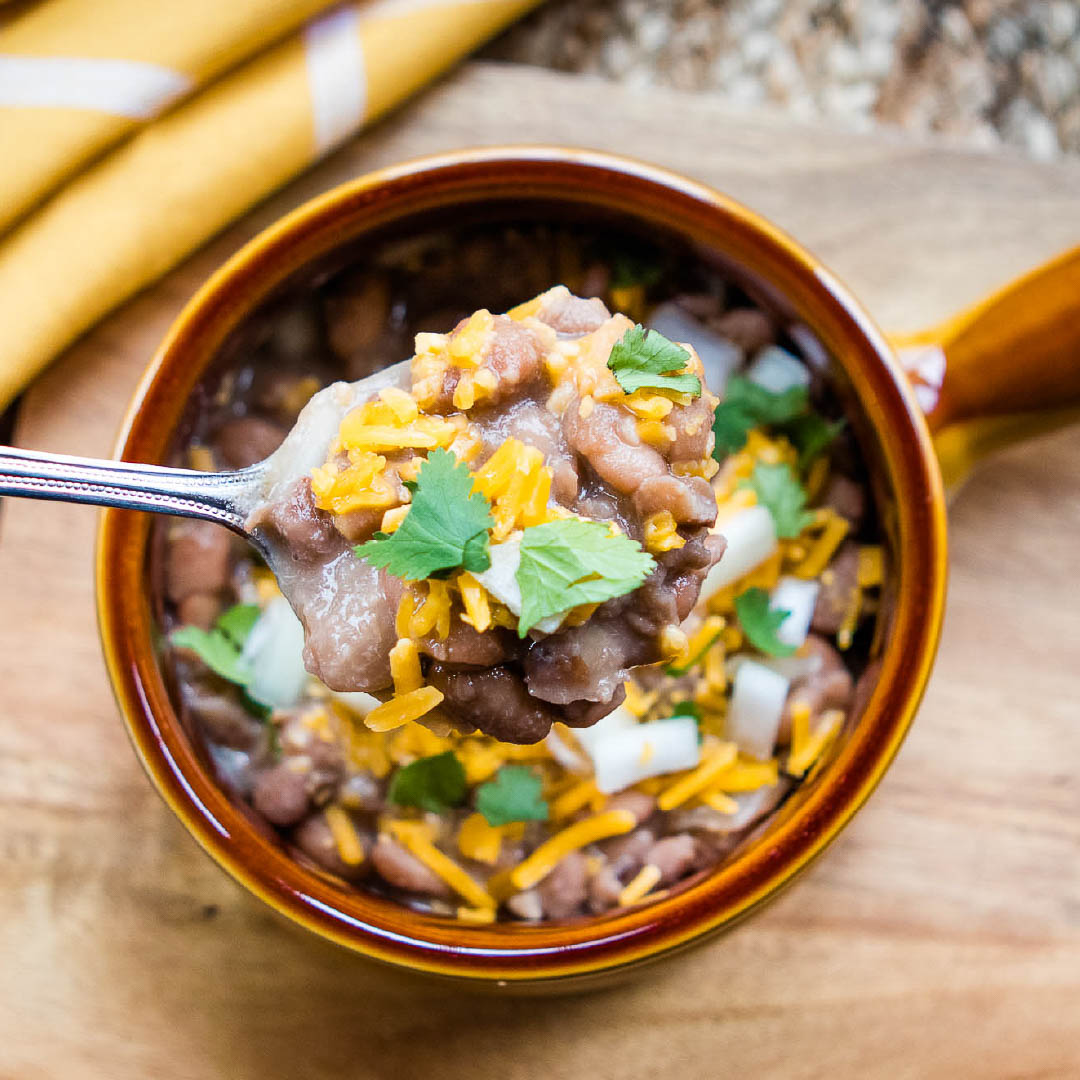
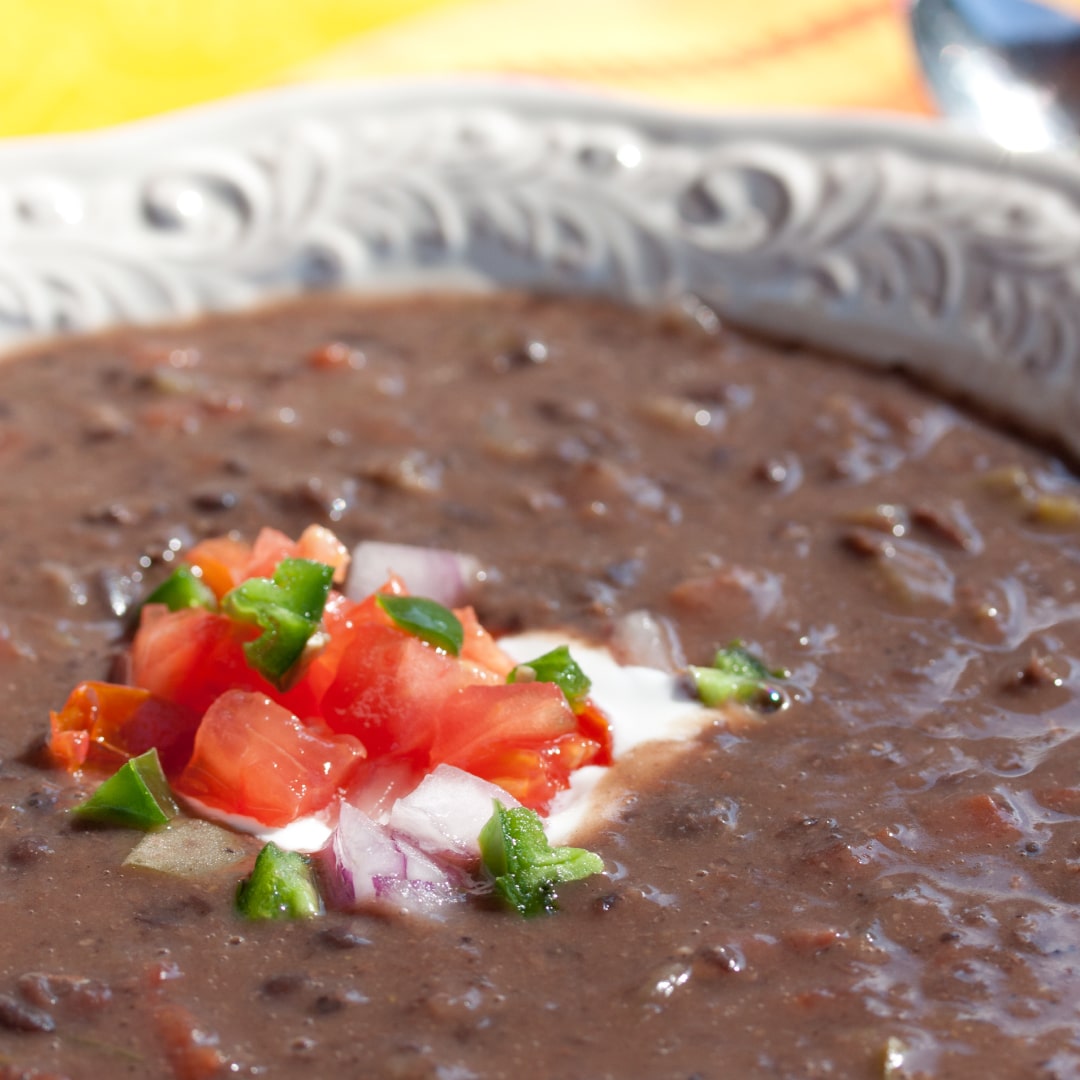
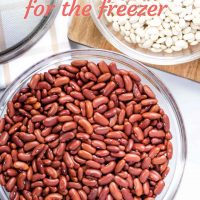
Wanda
Hi Mary Ann. I'm Wanda Carter, the author of The Potato Plan. I've been off the internet for quite some time dealing with a combination of personal and medical issues. Aging can be difficult but I still prefer it to the alternative.
As my medical issues have affected my abilities in the kitchen, my approach to freezer cooking has, of necessity, had to evolve also. But I'm still doing it and it has been a life-saver many times over.
Like you, I love to cook dried beans and freeze then in single serving portions. For decades I cooked them on the stove like my mother and my grandmothers had done. As it became more difficult to remain on my feet for very long, I began looking for ways to do things in a more hands-off way. I changed to cooking my beans in my slow cooker. Not too long ago I stumbled across some information that made me rethink that method.
As you can see, this comes from a navy website. According to the attribution at the beginning of the article, the information comes from a USDA publication.
https://www.med.navy.mil/sites/nmcphc/Documents/nepmu-6/Epidemiology/FDA-Food-Borne-Pathogens/Natural-Toxins/Phytohaemagglutinin.pdf
Name of the Toxin: Phytohaemagglutinin (Kidney Bean Lectin) In a nutshell, many slow cookers do not reach a temperature high enough to inactivate the toxin.
Here are a couple more links written in more down-to-earth language:
http://wildoats.com/blog-posts/undercooked-beans-dangerous/
https://en.wikipedia.org/wiki/Phytohaemagglutinin - this includes a number of links to references, including the pdf of the USDA publication.
When I first started to modify my cooking methods, the Instant Pot was new on the market and it intrigued me. I had stopped using my old pressure cooker in the 1970's after my mom's exploded and spewed a whole greasy chicken all over her kitchen walls and ceiling. I knew that the new generation of cookers were safer and I decided to take the plunge. This is now how I cook my beans. The Instant Pot US website has the information on timing for both presoaked and un-soaked beans here: http://instantpot.us/cooking-time/dry-beans-legume-and-lentils/
I hope this information is useful to you.
Mary Ann
Hi Wanda,
It's so wonderful to hear from you! I'm sorry to hear about your troubles and hope that things improve for you.
Thank you for the additional information about cooking beans in the slow cooker. I have used the IP to cook beans several times, but I usually use the slow cooker or stovetop. I will definitely read the information about Kidney Bean Lectin—I have never heard of it before—and leave it here for the readers as well. I have a large Crockpot (6 qt) that often overcooks food if I'm not careful, but not all slow cookers heat food that much so I can see where it would be a concern.
Take care, and thanks again!
Jessica
I don't eat beans very often, but I do like having the prep work done ahead of time. I soak my beans and then freeze them, then they are ready to throw into the crock pot when it's time to cook. I use a different method to quick soak my beans. I take some hot tap water, heat it in the microwave for a couple of minutes, then pour it over the beans. I use enough hot water to cover the beans by about an inch or so. They are soaked and ready to either freeze or cook in about a half hour.
Mary Ann
That's a good idea, Jessica. I prefer to have mine cooked before freezing because I have more time when I'm preparing them than I do when I'm putting together a meal, but I can see where this could be helpful. I've never tried soaking them that way, but I usually soak & cook such a large amount at once that heating the water in the microwave would be slower than heating it on the stove top. Thanks for sharing!